
Life sciences
19 Oct 2015
Chemistry Week: Ready for ski season? Make some snow!
In the office today we are making snow with a sodium polyacrylate superabsorbent polymer.

Life sciences
19 Oct 2015
In the office today we are making snow with a sodium polyacrylate superabsorbent polymer.
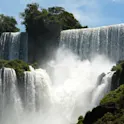
Life sciences
12 Oct 2015
Frontiers in Plant Science (FiPS) is off to Brazil from October 25 – 29 for the triennial International Plant Molecular Biology meeting, held this year at Iguazú Falls. If you’re attending the 11th International Congress of Plant Molecular Biology (IPMB 2015) in Brazil this month, we’d love to see you at the Frontiers booth. Stop by to learn more about Frontiers in Plant Science — the third-largest journal overall in plant science, and ranked first for volume and impact factor among Open Access titles — or to meet the chief editors of the Plant Evolution and Development, Plant Metabolism and Chemodiversity, and Plant Systems and Synthetic Biology sections. We’ll have flyers, giveaways, and more, and will be happy to talk to you about joining our editorial board, hosting a Research Topic, our innovative interactive peer-review system and more. We look forward to meeting you at booth 10 in the exhibitors’ area, October 25 – 29! You can also find us on Twitter @FrontPlantSci
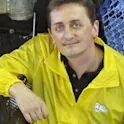
Life sciences
22 Sep 2015
Frontiers Science Here: Jon Copley – A new perspective on the deep sea world from Frontiers on Vimeo. Jon Copley is the first British person to dive further down than 5 km deep in the ocean. He is one of Frontiers’ Science Heroes. As a marine biologist, he dives and explores life in the depth of the oceans, across the world. Specifically, he studies colonies of animals in island-like habitats on the ocean floor, near hydrothermal vents. His goal is to investigate the distribution, dispersal and evolution of these species. He is a bit like a 19th century discoverer. “That’s an analogy I often like to use because these deep-sea vents are island-like colonies of marine life on the ocean floor,” he said. “It’s like going to a new continent.” Ultimately, learning from deep-sea species can lead to applications though potential new treatements from marine microbes and new design for wings and fan blades inspired from whales flippers, among others. Copley currently works at the University of Southampton, in the UK, as an associate Professor of Marine Ecology. He also is the principal investigator of the Chemosynthetic Environments Research Team. In a Skype interview, he shares his passion for discovering […]

Life sciences
17 Sep 2015
by Ben Stockton, Journal Operations Assistant In an interview with a former student, the late Frank Sherwood Rowland recalled the moment when, after returning home from the lab, his wife asked him how his work was going. He replied, “The work is going well, but it looks like the end of the world”. The frivolity of the prophesy in the early 1970s of Rowland, a former atmospheric chemist at the University of California, Irvine, is clear. Naturally it didn’t come to fruition, but there was the element of truth behind it. The research with his colleague Mario Molina (pictured below) created a new field of science and sparked major international intervention. Signing of the Montreal Protocol It is considered the most successful international agreement in history – by Kofi Annan, nonetheless. The signing of the Montreal Protocol on this day—September 16, 1987— showcased a worldwide unity of science, government and industry, the holy trinity of environmental lobbying. It instilled change that would transcend a generation of signatories. As if like a pebble dropped into calm waters, the surface has only just been disturbed. After almost 20 years, the benefits of that lie in the wake this agreement will continue to ripple outwards […]
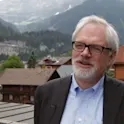
Life sciences
07 Sep 2015
Frontiers Science Hero: Alex Hansen from Frontiers on Vimeo. Prof. Alex Hansen has always been fascinated with problems. “As you get older you begin to find out that problems are wonderful,” he said. “You do not have to look into the galaxy to look for problems; you can see them right in front of you. I feel, quite literally, down to earth with my field of research.” Prof. Hansen earned his Ph.D. from Cornell University in 1986. He has been professor of physics at the Norwegian University of Science and Technology in Trondheim, Norway from 1994. Hansen is member of the Norwegian Academy of Science and Letters, the Royal Norwegian Society of Science and Letters and the Norwegian Academy of Technical Sciences. He was awarded an honorary doctorate (Dr. h. c.) by the University of Rennes in 2009. Hansen has chaired the Commission on Computational Physics (C20, of IUPAP) and acts as a vice president for the International Union of Pure and Applied Physics. He is also the Field Chief Editor for Frontiers in Physics. Without his curiosity Hansen would not be where he is now. Without curiosity the world would be, in his words, “terrible”. His research and need […]

Life sciences
22 Aug 2015
The reality of plate tectonics and continental shift are things we take for granted now; much like heliocentrism, planetary magnetism and the fact that illnesses do not derive from an imbalance of humours. However, of these truisms, the first two only became accepted in mainstream science in living memory. There was a time within the past sixty-odd years when geoscientists propagating the theory of continental shift were treading the path of “career suicide”. The groundwork behind the acceptance of his theory came about through a painstaking mapping of the ocean floor and, if one person could be put forward as having done the leg work in this regard, it was geologist Marie Tharp. Marie Tharp was born in Michigan, USA, in 1920. Her father was a soil surveyor for the US Department of Agriculture’s Bureau of Chemistry and Soils. As his work brought him – and his family – all across the United States, Marie had attended twenty-four high schools by the time she graduated. In considering third-level education, her preferred institution for studying literature did not accept women. As a result, Tharp enrolled at Ohio University where she graduated with a major in English in 1943 at the height […]

Life sciences
04 Aug 2015
Going to #eseb2015 in Lausanne, Switzerland? Join Frontiers in Ecology and Evolution at the 15th congress of the European Society for Evolutionary Biology this August 10 – 14! Come chat with us about Open Access publishing, peer-review, becoming an editor while tasting some delicious Swiss chocolates! All questions are welcome and no topic is off limits. For example, would you like to bring attention to your particular research area? Why not participate in editing a collection of cutting-edge peer-reviewed articles, called a Research Topic? Recently in Frontiers in Ecology and Evolution, the Research Topic Ballroom biology: recent insights into honey bee waggle dance communications has been quite successful, with over 8,000 views and 25 authors participating. If you are interested in social evolution, check out this other Research Topic, on Genetic effects on social traits: empirical studies from social animals – it is currently open for submissions! You can learn more about Research Topics in this brochure. We are looking forward to seeing you at ESEB 2015!

Life sciences
20 Jul 2015
While New Horizons is making history by sending back a wealth of data from Pluto and its moons, let us not forget another piece of space history – today, Monday July 20th, is the 46th anniversary of the first Moon walk. It all began with Apollo 11, with astronauts Neil Armstrong, Buzz Aldrin, and Michael Collins blasting off into space on July 16th, 1969, with the intent to be the first men to land on the Moon. On July 20th, at 20:18 UTC Neil Armstrong became the first man to walk on the surface of the Moon, an event watched by an estimated 500 million people (at the time nearly 15% of Earth’s population). The crew of Apollo 11 spent approximately 21 and a half hours on the lunar surface before returning home, bringing back with them over 20 kilograms of Moon rock. “Here men from the planet Earth first set foot upon the Moon, July 1969 A.D. We came in peace for all mankind.” – Inscription on the Lunar plaque left on the Moon Over the next 3 and a half years 5 other Apollo missions and 10 other men walked on the lunar surface: Apollo 12, November 19th, 1969: Pete Conrad’s first words upon landing on the Moon (“Whoopie! […]

Life sciences
16 Jul 2015
Meet Michiel Dijkstra, from the Frontiers Press Office. Before coming to us, he did a PhD on social evolution at the University of Copenhagen, and worked as a postdoc at McGill University and the University of Lausanne. *Entirely* coincidentally, he picked as his personal favorite a paper from Frontiers in Ecology and Evolution. Read the paper: http://fron.tiers.in/go/8R17QF Otero-Bravo A and Sabree ZL (2015) Inside or out? Possible genomic consequences of extracellular transmission of crypt-dwelling stinkbug mutualists. Front. Ecol. Evol. 3:64. doi: 10.3389/fevo.2015.00064 Michiel writes: “This paper is on a fascinating symbiosis: between stinkbugs (insects in the superfamily Pentatomoidea) and the bacteria that live inside their guts. The stinkbugs can survive without these bacteria, but develop more slowly and die faster without them. Here, Alejandro Otero-Bravo and Zakee L. Sabree from The Ohio State University review the evolutionary effects of the symbiosis on the genome – that is, the ensemble of the DNA, including genes – of the bacteria. The genome has shrunk and partly degenerated. But interestingly, not to the same extent as in many other bacteria that live in association with insects. The researchers explain this from the way the female stinkbugs pass the bacteria on to their offspring: by smearing […]

Life sciences
09 Jul 2015
Frontiers Science Hero: Annalisa Pastore from Frontiers on Vimeo. Annalisa Pastore is one of Frontiers Science Heroes. She is currently Frontiers’ Field Editor of Molecular Biosciences. A native of Italy, she has been Professor in Molecular Basis of Neurodegeneration at Kings College London, UK, since 2013. Her focus is on understanding the molecular mechanisms of Friedreich’s ataxia, a neurodegenerative disease progressively leading to a loss of coordination and speech difficulties. She says in her work, she relies on Nuclear Magnetic Resonance (NMR) to identify the structures of proteins involved in the disease messaging pathways. She explains what initially attracted her to this field: “I certainly fell in love with the double helix story when I was 17,” she said. Now, combining theoretical and experimental work, she relies on techniques that are mostly biophysical to elucidate the structure of very proteins that were “one of the loves of her youth.” Her current work was initiated following the discovery, in 1996, of the human frataxin gene associated with Friedreich’s ataxia. “One of the most beautiful things that we have been doing was, really, to understand the link between frataxin and [its role in] the iron-sulfur cluster pathway, she said. This led her to—at least partially— identify the role […]

Life sciences
16 Jun 2015
Heavy Metal and related genres, such as Death-, Black-, Folk-Metal, or Metalcore, are often associated with aggression and even criminal offence.

Life sciences
11 Jun 2015
The study used data from 4,450 US adolescents to probe why some students shun math-intensive fields. Believing that solving tough math problems requires innate abilities might discourage students, the researchers reasoned.
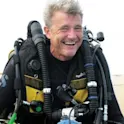
Life sciences
09 Jun 2015
By Nina Rothe Former Vice President of the Royal Geographical Society and Chair of the Expeditions and Fieldwork Division, polar expert Paul Rose is currently Expedition Leader for the National Geographic Pristine Seas Expeditions. He was the Base Commander of Rothera Research Station , Antarctica, for the British Antarctic Survey for 10 years and was awarded HM The Queen’s Polar Medal. For his work with NASA and the Mars Lander project on Mt Erebus, Antarctica, (which he climbed, of course!) he received the US Polar Medal. And he has a mountain named after himself in Antarctica. Happy World Oceans Day, Paul! When you think about the sea, what’s the first image, smell and sound that comes to your mind? Freedom, simplicity, adventure, promise! What has been the most important achievement in terms of ocean conservation in the past year and what do you consider the 3 most pressing problem(s) facing the world’s oceans right now? Raising the level of awareness to the extent that this is now a genuine sweet-spot for ocean conservation is a real success. For the first time in history, people understand that human activities directly affect the ocean’s health. The there most rousing problems are: overfishing, […]
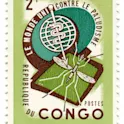
Life sciences
25 May 2015
There are 200 million cases of malaria each year and 500,000 deaths, mostly among children under 5. Bednets, insecticides, and medication all help to control the disease, but complete eradication is a long way off.
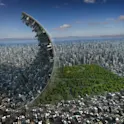
Life sciences
22 Apr 2015
Urban Ecology is a new specialty section available through the community-run open-access journals Frontiers in Ecology and Evolution. “Urban ecology is highly interdisciplinary and there are very few journals that have the right scope for the most exciting new papers. Research in urban ecology can bring together disciplines as diverse as biology, physical science, engineering, social science, and urban planning and design. The new speciality section will be a great new venue for these papers.” – Diane Pataki, Specialty Chief Editor, Frontiers in Ecology and Evolution – Urban Ecology The Urban Ecology section invites submissions that advance our understanding of the structure, function, and dynamics of urban ecosystems from a diverse range of perspectives. Urban ecology is a broad ranging field that incorporates methods and perspectives from many disciplines to understand the complex components and processes of cities and settlements as well as interactions between human settlements and larger regions. We use the term “urban” broadly to refer to human settlements and their transitions over a range of scales and definitions, from local political and land use/land cover–based definitions to larger geographic boundaries and ecological footprints. Submissions related to biophysical as well as social processes in urban ecosystems are welcome, including studies of urban socioeconomic dynamics, […]
Get the latest research updates, subscribe to our newsletter